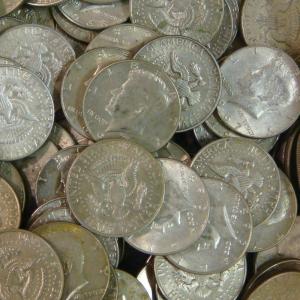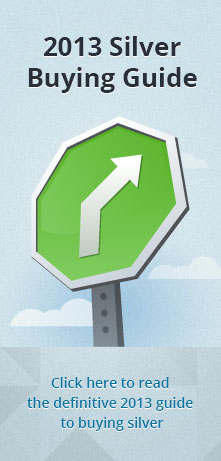When the average investor or anyone who wants to invest in silver looks to purchase coins, Junk Silver is one of the easiest and least expensive options. Junk silver includes coinage minted in the United States from various dates up until 1970, and the silver content ranges from 90%, 40%, and 35%. Junk silver can be found in everyday change, bank coin rolls, bought in “bags” from silver dealers, bought as rolls, and found at estate sales or coin shows. Local dealers also sell junk silver.
Purchasing 40% Silver
Junk silver coins in bags are the most overlooked way to purchase physical silver at the best price and value. These coins have a much higher value in silver than the actual face value. The silver content is valued on the precious market spot price at the time of purchase, and any premiums or fees above the spot price are generally minimum. Of all the junk silver available, 40% junk silver coins are the most discounted. Investors are attracted to the fact that 40% silver coins are considered numismatic, allowing the coins to be exported. When purchasing 40% silver coins, the prices are more flexible and easier to negotiate.
Junk silver coins that contain 40% have a double advantage: They are always worth at least the face value denomination, and in times of increased silver market prices, these coins are worth many times more than the origination denomination. Junk silver coins are always easily used, traded, and liquidated. Survivalists and other investors consider junk silver such as 40% silver coins a solid source of protection against inflation or economical crisis.
History of 40% Coins
The price of silver increased in the 1960s, and the United States government ceased minting coins with 90% silver, reducing it to 40% silver. The first 40% coins were the Kennedy half-dollars that were minted with an inner layer made up of 79% copper and 21% silver. These layers were sandwiched between an outer layer of 80% silver and 20% copper. This is called a “clad” coin. The total alloy in each of these coins is 40% silver and 60% copper. These were the last “regularly-circulated” coins to contain silver.

40% Silver Coins
From 1965 on, quarters were minted as copper and nickel clad coins, but Bicentennial Quarters were minted by the US Mint and sold as proof sets. The Bicentennial Quarters are 40% silver and have an “S” mintmark on them. These Bicentennial Proof Quarters are separate from regular Bicentennial Quarters minted without silver and meant for circulation.
Other 40% silver coins include Kennedy Halves and Eisenhower Dollars. These coins were sold as proofs from the US Mint and differed in silver content from the same coins meant for circulation. They came in special plastic holders and boxes. These can be identified easily when in their original packaging, but once circulated can be confusing for collectors and investors. The two types of the same coins are very difficult to tell apart.
These 40% silver coins can be bought from local and online dealers, at estate sales, coin chows, from private parties, and other resources. Investors are wise to know how to tell the difference from the 40% silver issued coins and the coins meant for circulation that have no silver content.

